Vedānta and Brahmavidyā: The Wisdom of the Rishis
One of, if not the, unique contributions of the Indo-Aryan people[1], to which Vedānta (the philosophical foundations of Hinduism) and Buddhism ultimately owe their heritage, is the importance they place, and fundamental belief in, what is variously referred to in the Western theological tradition as realization, liberation, or enlightenment, i.e. what the Buddhists call nirvana and what the Vedic tradition calls mokṣa. All of these various terms are used to describe what the ancient Indo-Aryans, the people from which the great religion of the Hindus emerged from which Buddhism eventually emerges from, believed was not only the fundamental nature of reality itself, but also the fundamental nature of the Soul which they not only believed existed, but also believed that it was in fact eternal, that it was subject to rebirth, and that in its essential state it is non-differentiated form the eternal Soul, what the Upanishads refer to as Brahman.
The ancient Indo-Aryan civilization sprung forth in the Indus Valley region in modern day India and Pakistan (to the ancients Eastern Persia), and was the source of the Vedas, which represents according to some scholars some of the oldest literature of mankind. This ancient Indus Valley civilization spread and flourished in the northwestern part of the Indian subcontinent from circa 3300 to 1300 BCE, roughly aligning with the advent of the ancient Sumerian civilization directly to the West and also the ancient Egyptian civilization even further West in North Africa. One of the great unanswered and hotly disputed topics of the study of philosophy in antiquity is when in fact these Indo-Aryan belief systems emerged, when they can be “dated” within the historical timeline so to speak, and what level of influence they had, if any, on the development of theo-philosophical traditions in the West (as reflected in the Hellenic philosophical tradition for example) or to the Far East in what came to be known as China. As of yet we have not found any archeological evidence of any contact between these disparate civilizations, nor do we have any real evidence of any contact between the Indo-Aryans and the ancient Chinese either, but the absence of evidence, and in particular in this case, is not necessarily evidence of absence.
The civilization from which Hinduism emerges is traditionally associated with the Indus Valley, a river system from which an ancient culture could grow crops and thrive, a similar relationship to the Sumerians and their Tigris-Euphrates and the Egyptians and their Nile. This relationship with water and its fundamental existence and prerequisite feature for the source of life, clearly left its mark on the cosmogony and creation mythos of all of these ancient cultures and with the Indo-Aryans we find traces of the belief in universal emanation from a watery abyss, i.e. āpas in Sanskrit, just as the Egyptians had their concept of nu and the Ancient Sumerians had their Apsû.
While one can argue that given the basic and fundamentally similar nature of these cosmogonic belief systems – beliefs that permeated not only the Mediterranean peoples but also the Sumer-Babylonians, the Indo-Aryans, and even the Chinese – that all of these traditions stemmed from a single, very ancient and pre-historic mythological narrative that followed the migration of ancient man out of Africa (roughly 60,000 years ago) and followed the migration path of early man as they spread to the East over the Eurasian continent in wave after wave of migrations, a much more plausible argument however would seem to be, is that the similarities in the cosmogonic and theogonic narratives of all these ancient peoples stems primarily from the fact that each of these individual cultures and societies was presented with similar challenges, experiences and relationships with their environment which ultimately held away over, and governed their existence and sustenance, out of which emerged their respective mythos and various theo-philosophical systems of belief.
This argument basically rests on the belief that it is from these common experiences, both in terms of the relationship with their environment and the ensuing socio-political challenges that evolved as their societies advanced – again given their common experience and common psychological constitution, which in each case was defined by their relationship with the river system and other natural surroundings that their respective civilization depended upon for survival – is ultimately the source of the similarities of the mythos and cosmogonic narratives of all of these ancient peoples. For it is definitely true that in each case the river system within which each of these great ancient civilizations emerged from and depended upon, was not only the source of their food and sustenance, their way of life really, but it also framed their idea of the passage of time and their sense of “order”.[2]
Right in the middle of this argument as it were, not just theoretically speaking but actually geographically as well, sits the Indo-Aryan people and the theo-philosophical systems attributed to them and their descendants. The common mythos across the ancient civilizations of Eurasia has already been analyzed in detail, but as we search for a deeper meaning behind these ancient creation narratives, or at least the meaning they had to the ancient authors and interpreters of the various traditions, it is to the subsequent theo-philosophical systems which emerged out of the respective traditions themselves that we must look to – and for the Indo-Aryans this is Vedānta, or literally, the “end of the Vedas”.
The Vedas represent not just the earliest records of the theology, sacrifices, hymns and practices of the Indo-Aryans, but they also represent one of the earliest compiled works of literature and intellectual records of civilized man. The Sanskrit word véda means knowledge or wisdom and is derived from the root vid, “to know”. Like many other religious traditions, the Vedas are believed to have been revealed directly to the ancient rishis, or “seers”, directly from Brahmā, the ancient Creator god of the Hindus, and passed down from generation to generation from teacher to student in a long standing oral tradition and then documented and transcribed by scholars and sages toward the end of the first millennium BCE.
While alphabetic writing does not appear in the archeological record in the Indian subcontinent before the 3rd century BC in the form of the Brāhmī script, a derivative of the Phoenician alphabet just as the ancient Greek alphabet system is, the Vedas were not actually written down until centuries later, being captured and passed down from generation to generation via the classic oral method, hence the nature of the text in verse which makes it much easier to memorize and record accurately. It is primarily form the linguistic evidence as reflected in the compiled works themselves that the date of composition of the earliest portion of the Vedas is believed to have occurred in the middle of the second millennium BCE give or take (c. 1500-1100 BCE), which means that the verses were orally transmitted for some 1500 years or so until they were finally written down in the first few centuries CE.[3]
The Vedas are the oldest Indo-Aryan Sanskrit texts and are the oldest extant Hindu scripture. Sanskrit was the primary liturgical language of Hinduism and its offshoots Buddhism and Jainism and virtually all of the ancient texts of these religions were authored in Sanskrit. Sanskrit’s position in the cultures of Greater India is akin to that of Latin and Greek in Europe and it has significantly influenced most modern languages of the Indian subcontinent, particularly in India, Pakistan, Srī Lanka and Nepal. The pre-classical form of Sanskrit is known as Vedic Sanskrit, and it was the language used in the Rigvéda. This qualifies Vedic Sanskrit as one of the oldest attestations of any Indo-Iranian language, and one of the earliest attested members of the Indo-European language family, the family which includes English and most European languages.
The corpus of Vedic texts, all transcribed in some form of Sanskrit, are classically divided into Samhita portions, which are collections of mantras from the four Vedas, the Brāhmaṇas, which are prose texts that describe Hindu sacrifice and ritual, and some of the older Upanishads which deal specifically with the meaning behind the rituals and the nature of knowledge and reality. Each of the Brāhmaṇas is associated with one of the Samhitas and may also include Āranyakas, literally “forest texts”, as well as one or more Upanishads.
The Vedas are a vast set of literature, typically classified into four sets of books or categories, the most ancient of which is the Rigvéda, a collection of over 1000 (Vedic) Sanskrit hymns written in the oldest form of language known to the be associated with the Indo-Aryan people from antiquity, namely Vedic Sanskrit which is closely related to the language recorded in the Avesta literature of the Iranian/Persians, i.e. Indo-Iranians. The Rigvéda, give us glimpses into the life of the Indo-Aryan people who first settled and formed complex societies in the Indus Valley region some seven thousand years or so ago, and is also the primary source material of the mythology, rituals and belief systems of these pre-historic people. The Rigvéda is classically organized into ten books, called mandalas in Sanskrit, and consists mostly of lyric poems and hymns dedicated to various deities, chief of whom is Indra, the leader of the ancient Indo-Aryan pantheon.[4]
The other three Vedas, which are of similar structure, style and content as the Rigvéda speaking to consistent theo-theo-philosophical tradition which they represent, are the Samaveda, which is a collection of hymns and verses organized in a similar manner as the Rigvéda and which includes verses and hymns which are for the most part also found in the Rigvéda as well, the Yajurveda which is primarily a compilation of ritualistic formulas and offerings that are to be perfumed as part of the yajña[5] fire sacrifice ritual, and the latest compilation of the four the Atharvaveda, which contains prose and poems verses related to various cultural and day to day rites and rituals which pertain to various medicinal, cultural and socio-political matters, including passages which discuss the meaning of ritual itself, i.e. the Upanishadic portions.
The Samaveda, Yajurveda and Atharvaveda are of similar structure, style and content of the Rigvéda, and in many cases (like the Samaveda for example), include much of the same material that is to be found in the Rigvéda itself, speaking to the existence in Indo-Aryan antiquity of several different “schools” of thought, to use that term broadly, which all stemmed from the same original source material as it were, the oldest stratum of which can be found in the Rigvéda, but at the same time had different areas of emphasis and different traditions that were encapsulated in their respective “redactions” or “versions” of Vedic lore. While all three are believed to be of later composition than the Rigvéda, but nonetheless all are believed to have arrived at their existing form more or less by the middle of the first millennium BCE, thereby establishing an Indo-Aryan Vedic period of history which runs roughly form the beginning of the 2nd millennium BCE to 500 BCE or so and which aligns with the composition of the Vedas. Nonetheless, all four of the Vedas are considered part of the Hindu theo-philosophical canon as it were and the subsequent various philosophical developments that emerge from ancient India are delineated along the lines as to whether or not the Vedas are appealed to as authoritative scripture.[6]
The Vedas represent a core part of the Indo-Aryan theo-philosophical belief system from a very early stage of their civilization development and in the latter half of the first millennium BCE their social structure was architected to reflect this; namely the sacred teachings of the Vedas were to be preserved and taught by a learned, priestly class of society, i.e. the Brahmins, while the ruling or governing of society was to be performed by the Kshatriyas (or warrior class), the herders, farmers, merchants and traders were delineated in the Vaishyas class, and the servants or working class was given the denomination of the Shudras. Traces of this stratification, what has come to be known as the Hindu caste system, can be found in the Rigvéda and the Purāṇas, but is clarified and codified more distinctly in the Manusmriti, or Laws of Manu, which was compiled sometime between the 3rd century BCE and 2nd century CE, reflecting a later socio-political transformation of Indo-Aryan/Hindu society – later than the Vedic period that is.
Parts of the Brāhmaṇas, Āranyakas, as well as Upanishads explore what have become the theo-philosophical underpinnings of Hinduism, i.e. Vedānta. In these works, we find the roots of Vedānta which rests fundamentally on such notions as Brahman, the absolute or underlying nature of the universe, and Ātman, or Self, the reflection of Brahman within the context of the individual psyche, or Soul. However, it is within the Upanishadic corpus that we find the philosophical foundations of what later came to be known as Vedānta.
Much like the ancient scripture of the Hebrews in the Old Testament or the Zoroastrian Avesta, or even the classical Greek mythic traditions of Hesiod and Homer, the Upanishads and the rest of the Vedic scripture in toto represent an oral tradition that reaches deep into antiquity that was only later written down as writing became ubiquitous in the latter part of the first millennium BCE but nonetheless represents an intellectual, theological and “mystical” tradition that reaches far back into antiquity, at least as far back as the advent of Indo-Aryan civilization itself and its supposed shared roots with Indo-Iranian culture and civilization.
The Upanishads however, form the philosophical backbone of Vedānta. The Sanskrit word Upanishad is derived from the Sanskrit root sad, which means to ‘to loosen’ or ‘‘to attain’ or even ‘to annihilate’, combined with the prefixes upa and ni, which denote ‘nearness’ or ‘sitting beside’ and ‘totality’ respectively. You can therefore translate the meaning of upanishad to mean something along the lines of that which is attained completely and entirely whilst sitting beside or by. As understood by Śaṅkara, one of the most influential Indian philosophers of all time from the 8th century CE, the term upanishad is in effect a veiled reference to the content of the Upanishads, namely Brahmavidyā, knowledge of Brahman, and Atmavidyā, knowledge of Self, or Ātman. It is the fundamental unity of Ātman and Brahman that represents the core tenet of Upanishadic philosophy.[7]
Vedānta is the term used to describe the orthodox philosophy of the Hindus and is reflected most notably in the Upanishads, the portions of the Vedas that do not deal with sacrifice or ceremonial worship, i.e. karma or dharma, but deal with the true meaning and import behind the various sacrifices, rituals and hymns that are described in the Vedas – namely the nature of Brahman, or the World Soul, and its ultimate unity with Ātman, the individual Soul. This literature focuses not on ritual or sacrifice, which represents the bulk of the Vedas in fact, but on the underlying meaning and import of said sacrifices and the fundamental nature of existence or reality.
Vedānta however, while intellectually and culturally linked to the Vedas and Indo-Aryan theo-philosophy as a whole, expounds upon the more esoteric teachings of the Āranyakas and the Upanishads portion of the Vedas and are fundamentally “mystical” or theo-philosophical in nature. These portions of the Vedas were intended for use not just by the Brahmins, or Indo-Aryan priests, but also by renunciate practitioners, i.e. the “forest dwellers” as well as a means to understand, or comprehend, the true import and relevance of the Vedas as understood by the rishis, the original authors of the Vedas from deep antiquity.
Although in antiquity Vedānta referred more specifically to the philosophic portion of the Vedas, the bulk of the content coming from the Upanishads, over time Vedānta took on a broader meaning to represent the body of work and knowledge that in toto interpreted the “meaning” of the Upanishads. As such, the three primary sources of Vedānta as a distinctly Indian theo-philosophical system are:
- the Upanishads, representing the end of the Vedas or the philosophical and mystical portions of the Vedas,
- the Bhagavad Gītāor “Song of the Lord” from the epic poem the Mahābhārata, and
- the Brahmā Sūtras which was an attempt at consolidating and synthesizing Vedic philosophy from the 2nd or third century CE.[8]
The first attempt at compiling and synthesizing the teachings of Vedānta, their interpretation as it were, is contained in the Brahmā Sūtras (sometimes referred to as the Vedānta Sūtras) which are believed to have been written somewhere around the 2nd century CE. The Brahmā Sūtras are part of the Uttara-Mīmāṃsā (Vedantic) tradition and are in essence a summary and compilation of the teachings of the Upanishads. It is in the Brahmā Sūtras that the teachings of Vedānta are set forth in a systematic and logical order, rather than the scattered and somewhat inconsistent manner which the teachings are presented in the Vedas and the Upanishads given their deep historical and sometimes esoteric roots and their focus on sacrifice and ceremonial worship.
The Bhagavad Gītā, or the “Song of the Lord” has also, from a theo-philosophical standpoint, played a significant role in the development of Vedic thought over the centuries. The text is a part of the ancient Sanskrit epic called the Mahābhārata, of which some of its oldest parts date from the middle or early part of the first millennium BCE, and is undoubtedly one of the greatest epics of all time and is commensurate in stature and influence in the Hindu and Indian tradition as the Iliad or the Odyssey are in the Western intellectual tradition. The Bhagavad Gītā is a portion of this mythological epic text and is a narrative of a dialogue between Lord Krishna and Prince Arjuna that takes place on the eve of a great battle of the Kurukshetra War.
Arjuna, whose name means “bright” or “shining”, is one of the five Pandava brothers, all sons of Pandu, who are aligned against their cousins the Kauravas, descendants of Kuru, in a great civil conflict that is ravaging the nation. On the eve of this great battle, a battle between cousins and brothers, Arjuna voices to Lord Krishna his great reservations and doubts about the righteousness of the war in general, and more specifically the duty he has as a warrior to kill and fight to protect his family and his country in the name of “righteousness”. Krishna, Arjuna’s charioteer, uses this stage as the pedestal from which he gives his great teaching regarding the nature of the Soul (jiva), the importance of duty (dharma), the path(s) to liberation (mokṣa), the true meaning of knowledge (jnana), the importance of devotion (bhakti), and the ultimate grounding of all things and beings in the all-pervading Brahman in order to motivate and inspire Arjuna to perform his duty, his dharma, and fight.[9]
In the Bhagavad Gītā, Krishna helps Arjuna understand why he must fight, and why it is morally right for him to do so, and his teaching comes to represent a key aspect of Vedānta philosophy as it is interpreted in the Indian philosophical tradition. In the process of his expositions, Lord Krishna expounds upon key Vedic philosophical constructs such as mokṣa (liberation), karma (action), and dharma (righteous conduct), forming the theo-philosophical foundations of not just Vedānta, but Yoga as well, and in the end helping Arjuna understand that while it may seem immoral for him to go to war with his kin, it is nonetheless his duty to do so and it would in fact be immoral to abstain from fighting.[10]
The very root of Vedānta however, rests in the philosophy of the Upanishads, a set of treatises attached to various portions of the Vedas that elucidated upon the true “meaning” of the Vedic rituals, and the underlying theo-philosophical system upon which it was based. Albeit a later development than the Vedas proper from an intellectual perspective, it is within the Upanishads that we perhaps find the most prolific and poetic expression of Vedānta. The philosophy of the Upanishads however is very esoteric, and in some cases can be seen to contradict itself, and to this end many scholars have debated the origins of the material as well as the philosophical implications of the verses themselves.
In this context, the philosophy of Vedānta has three primary interpretative traditions, each of which although shares the basic semantic and theo-philosophical intellectual framework as established and put forth in the Upanishads and Brahmā Sūtras, nonetheless has its own unique perspective on the underlying metaphysics and theology as it were. These three schools are Advaita Vedānta, Viśiṣṭādvaita Vedānta, and Dvaita Vedānta, founded by Śaṅkara, Ramanuja, and Madhvacharya respectively.
Probably the most lasting and influential of the three schools of Vedānta is the monistic, or non-dual, interpretative tradition which is referred to as Advaita Vedānta. This tradition and set of teachings is reflected most profoundly and influentially by the 8th century Indian philosopher and theologian Ādi Śaṅkara, sometimes simply referred to as Śaṅkara.
Ādi Śaṅkara with disciples. By Raja Ravi Varma (1848 – 1906).[11]
According to Śaṅkara, Brahman is the only reality, and the (mis)conception of the reality of the physical world of distinct subjects and objects is caused by illusory power of Maya, the creative force, or “veil” as it is sometimes referred to as, which is an aspect of and function of Īśvara, the God of the Hindus, but not a fundamental attribute of reality itself. It is Maya which is the underlying source and cause for the individual persona’s (mis)conception to perceive any sort of separation or distinction between the Self or Soul, Ātman, and the all-pervading Brahman which represents not only the true underlying substratum of all existence of all animate or inanimate life, but also the very nature of Ātman itself.
The thought that what is not That is That grows up in the fool through darkness; because no discernment is there, it wells up, as the thought that a rope is a snake; thereupon a mighty multitude of fatuities fall on him who accepts this error, for he who grasps the unreal is bound; mark this, my companion.[12]
Advaita literally means “not two”, or non-dual and hence the basic characterization of the theo-philosophical system as non-dualistic” or monistic. Its primary tenet is the fundamental unity of not only Brahman and Ātman, but also that all of the physical universe, all cognitive beings in fact, are simply reflections of this all-pervasive Brahman. Since all of reality is simply and essentially Brahman, it cannot be said to possess any attributes per se, and it is only via the power of Maya, that our perception of the physical world “seems” real. As such, it is the ignorance of this true reality that lies both within and beyond the world governed by Maya that is the ultimate cause of all suffering and misery in the world. Therefore, it is through Knowledge, and ultimately realization, of the true nature of Brahman – and in turn Ātman which is essentially equivalent to Brahman at its core – that liberation, mokṣa, and an end to the endless round of births and deaths, and the suffering thereof, which characterize human existence, is ultimately attained.
The source of the concept of Īśvara, when looked at from this fundamentally non-dualistic and monistic perspective, stems from the inability of the individual Soul, i.e. the jiva, to grasp this very simple and yet at the same time very subtle and abstract concept of the existence of an all-pervading principle, i.e. Brahman, in a non-anthropomorphic way. Therefore God, or Īśvara to the Hindus, while a helpful and relevant construct to help us appreciate and come to understand and recognize the “unknowable”, nonetheless also owes its existence to Maya, the grand illusion. God, as well as the entire physical world itself in fact, are both equally illusory when looked at from the perspective of full realization and understanding of Brahman, i.e. jnana or Knowledge in the most abstract and fullest sense of the term.
Again, from a theo-philosophical standpoint, according to Advaita Vedānta, there is not only no difference between the individual Soul, i.e. Ātman, and the fundamental underlying stratum of existence, i.e. Brahman, but in fact ultimately there exists nothing else except Brahman, and it is only through thorough and complete knowledge and understanding, i.e. mokṣa, of this basic characteristic of existence that one’s Soul can be truly liberated.
Viśiṣṭādvaita Vedānta – literally Advaita (i.e. “not two”) combined with “uniqueness” or qualifications – as expounded by Ramanuja in the 11th and 12th centuries AD, is also a non-dualistic Vedantic school, but scholars mostly refer to this philosophical system as qualified non-dualism, as opposed to the pure non-dualism of Śaṅkara. The main difference between this school of thought and Advaita Vedānta is that Brahman is asserted to have real attributes or characteristics that have some level of existence in reality.
This Brahman with attributes is typically referred to as Saguna Brahman, and include such qualities such as the individual Soul as well as inanimate matter, i.e. the physical world. Viśiṣṭādvaita argues that while it is true that Brahman alone is real, but that it is also true that Brahman has real, concrete attributes which can be said to exist. These basic attributes, or qualities, are differentiated forms or manifestations of Brahman and are also real, i.e. are not illusory as postulated by Advaita Vedānta. Viśiṣṭādvaita Vedānta ultimately asserts the reality of the physical world, and the Soul, despite the basic truth and reality of the undifferentiated and all-pervading Brahman which underpins all of physical existence or reality.
From this qualified non-dualistic perspective, Brahman, matter, and Soul, are in fact all distinct from each other from a relative standpoint, even though they are in essence inseparable entities and reflections of the indivisible Brahman In this conception of Vedānta then, Brahman is said to have “attributes”, and yet at the same time is also “attributeless” – both statements and perspectives are true and valid, i.e. they are not mutually exclusive concepts, and they depends upon one’s perspective. Ramanuja argues that all of the main treatises of Vedānta – namely the Upanishads, the Bhagavad Gītā and the Brahmā Sūtras – can only be interpreted in this way, i.e. that there is unity in diversity, and that Brahman is both with attributes and without attributes at the same time and that therefore the physical world and our concept of individuality, as reflected in our concept of the Soul (i.e. the jiva) is in fact “real” from a relative standpoint. This school puts forth that it is not through knowledge, jnana, that the easiest and best path to liberation (mokṣa) lay, but through bhakti, or the path of “devotion”, to God (as represented by Viṣṇu), along with the notion of self-surrender, that are the clearest and best path to liberation.
Dvaita Vedānta, or the dualistic school of Vedānta, was founded by Madhwāchārya in the 13th century and probably comes closest to our Western conception of God and the world as we understand it in the Abrahamic theological context. Dvaita Vedānta differs from the Advaita and Viśiṣṭādvaita schools in that it identifies Viṣṇu directly with Brahman completely and in so doing fundamentally asserts the existence of God as a creative and preserving entity and benefactor of the universe. That is to say, God as a creative principle is not an abstract construct per se, but is a real existing entity. At the same time also admits to, and asserts the fundamental reality of, the physical world and the world of the Soul as well.
Dvaita Vedānta asserts that Viṣṇu is not only metaphysically equivalent and indistinguishable from Brahman, and that this entity does in fact exist as the Supreme Self, it also (like Viśiṣṭādvaita Vedānta) asserts that this Supreme Self does indeed have “real” attributes which also “exists”, i.e. the notion of Saguna Brahman. But it also asserts, and this is what distinguished it from the other two predominant schools of Vedānta philosophy, that the best and truest, and in fact only, interpretation of Vedānta scripture as a whole from a theo-philosophical perspective is that while this Supreme Self does in fact “exist”, it’s “essential nature” is fundamentally different from the essential nature of individual souls (jīvātmans) and the physical world in toto.
In this light, it regards Brahman, all matter, and the individual Soul as eternally existent and mutually separate entities, as opposed to a manifestation of the one eternal substance or essence of Brahman as is reflected in the qualified non-dualistic and non-dualistic schools of Vedānta. This fundamental characteristic of the world, its wholly distinct and separate (albeit somewhat dependent) existence on Brahman, is unique to Dvaita Vedānta, hence the dualistic nature of the theo-philosophical system.
In this form of Vedānta, sentient beings are but shadows, or images, of the divine, i.e. the Supreme Self as Viṣṇu or Brahman,[13] but at the same time are not constituted or made up of the same essential substance and in this respect are not “identical” with Brahman as is asserted by the non-dualistic and qualified non-dualistic schools of Vedānta. Given that the sentient and physical world that we as individuals, i.e. jivas, inhabit and live in, and (ultimately) are to be liberated from, is distinctive and unique in nature relative to the nature of the Supreme Self, this school also advocates bhakti, devotion and worship of the Supreme Self as manifest in Lord Viṣṇu or Brahman, as the best and clearest route to liberation. But, distinct from Viśiṣṭādvaita Vedānta, it further expands upon this notion of bhakti to include the concept of hatred or separateness (dvesha), and indifference towards the Lord, which will lead the jiva to eternal hell and eternal bondage respectively, very much akin to the notion of heaven and hell that we find in the Judeo-Christian and Islamic theological traditions in fact.
In the non-dualistic and qualified non-dualistic schools of Vedānta, liberation is ultimately achieved through knowledge or, and full communion with, Brahman as conceived of as the all-pervading substratum of existence. This knowledge is called Brahmavidyā, or literally knowledge of Brahman, and is fundamentally revelatory in nature, whether such revelation comes through knowledge, jnana, as put forth by Advaita Vedānta, or via a path of devotion and worship, bhakti, as put forth by Viśiṣṭādvaita Vedānta. Fundamental to the all of the different variants of Vedānta however, and consistent with any reading and interpretation of the Brahmā Sūtras the Upanishads or the Bhagavad Gītā, is the establishment of the importance of self-realization and liberation, i.e. mokṣa, as the goal and end, i.e. purpose, of life. And furthermore, regardless of the school of interpretation, be it dualistic, non-dualistic or qualified non-dualistic, it is Brahman as an abstract theo-philosophical construct, again as reflected in the underlying literature of the system itself, that represents the universal spirit that underlies all of the cosmos and all of its creation.
The characteristic Indian theo-philosophical system of Vedānta, as seen through the lens of any of the three primary schools in their respective nuanced metaphysical and theological conception of the meaning of life and the nature of existence as reflected in the Upanishads, the Brahmā Sūtras and the Bhagavad Gītā, applies both a rational and cohesive structure to the extensive, esoteric and vast corpus of Vedic “scripture”. Each of the schools, despite their differences, all look to the Vedas as the ultimate source of Truth and believe them to have been “revealed” and compiled by the rishis, or seers, from antiquity, as well as believe them to be co-existent and co-emergent with the universe itself.
Vedānta philosophy in this context represents not just the pinnacle of the Indian intellect, but also one of, if not the, greatest and lasting contributions of the Indian or Indo-Aryan culture as a whole – one of the most lasting and persistent in the entire world – to the theo-philosophical legacy of mankind. Vedānta as a theo-philosophical system establishes not only the intellectual and metaphysical basis for the direct experience of the divine through the vehicle of the Soul (Ātman), i.e. what is referred to as “communion” in the Western theological tradition, but also the intellectual and metaphysical context within which the reality of the physical world, as well as the existence of the Soul (Ātman) along with the meaning of life, can be altogether understood. This theo-philosophical tradition from inception in deep antiquity, consistent with the theo-philosophical development in the West in antiquity in fact, recognized the existence of Brahman, or God, as well as the Soul, and lays out in painstaking detail and clarity the connection between the two, as well as the means by which the goal of life, mokṣa or liberation, is to be pursued and ultimately achieved.
While the Indo-Aryan theo-philosophical tradition as reflected by the Vedas is steeped in ritual no doubt, rituals and practices that persist to this day in fact, but the tradition also developed a comprehensive and thorough approach to ascribe “meaning” to these ancient rituals and rites, establishing a parallel and yet still ultimately interconnected and synthesized “interpretation” of the rituals, rites and practices which were and still remain such a fundamental and profound aspect of Indian culture and society. Brahman then, as conceived by the Hindus, is a self-evident construct that was as old as civilization itself, in fact as old as mankind. It was the Chaos of the Greeks, the Nu of the Egyptians and the Apsû of the Sumerian cultures. But the Hindu religious tradition, and in particular in the theo-philosophical tradition that has come to be known as Vedānta, built upon this archaic and anthropomorphic conception of the universe and humanity and expanded upon it, reasonably and logically and for the most part bereft of religious dogma.
Vedānta professes quite specifically that God, Brahman, can in fact be “realized”, not just as a philosophical or intellectual construct, but as a fundamental aspect of life itself and that which ultimately gives human life meaning and distinguishes mankind from the rest of the species on the planet. Vedānta holds that not only can God be realized and “perceived” or “seen” in an analogous way as the physical world is “perceived” and that, in its purest and highest form as expressed by Advaita Vedānta by Śaṅkara, that the pinnacle of knowledge itself is recognizing this all-pervasive “reality”.[14]
And to this end, it’s important to understand the source of this knowledge, i.e. Vedānta, is from the eternally revealed Vedas themselves, the theo-philosophy being embedded and encoded in the Indo-Aryan mythos as it were. With Vedānta we find, like its cousin theo-philosophical system Buddhism, not only a rational approach to the nature of the Soul and its place within the cosmic and universal spectrum of existence, but also specific practices for revealing its true nature. Furthermore, Vedānta just as Aristotle does to the West without the so-called mystic or idealist element of Plato which he abandoned, also provides a cohesive and comprehensive system of metaphysics from within which the entire universal existence, and of course mankind’s place within it, can be understood, with critical importance held for a sense of purpose and value within the system itself.
In this context then, Indian theo-philosophy can be seen as much more integrated with their overall world view and their history as a culture and society that reaches far back into antiquity, and persisted, like the Chinese, as their civilization evolved and developed. This is reflected not only in Hinduism, which of course is the name given to the “religion” of the Indo-Aryan people, but also in Jainism and Buddhism as well which although are “unorthodox” traditions, i.e. heterodox, in the sense that they do not profess the validity and truth of the Vedas, they nonetheless are offshoots of this same intellectual development and profess, consistent with Vedānta more or less, the unity of the Soul with the Absolute.
The system of belief which rested on the indivisible nature of the Soul and its integral nature with the source of all things was kept alive in Indian society in a more pure form of religious thought that was divorced from politics and power which was in some sense juxtaposed with its counterparts to the West. It was protected by the personification of these ideas in the likes of Krishna, Buddha and others, and kept alive in the monastic, renunciate societies that interpreted the scriptures for the purposes of illumination and realization rather than for the establishment of authority or power. In Vedānta, metaphysics is baked into it and well documented in the theological tradition from the very beginning, whereas to the West the metaphysics, theo-philosophy, developed independent of the religious traditions per se. Furthermore, also unique to Vedānta as looked at as an example of a broad and robust theo-philosophical framework rather than simply the core foundation of the religion of Hinduism, you have a tradition that to a great extent continues to flourish today thanks to its reincarnation with the teachings of Vivekananda and the Ramakrishna Order which was founded in the twentieth century, culminating in many new translations of the old Vedic texts and their subsequent commentaries. In contrast, the Western intellectual tradition as reflected in the Hellenic philosophical tradition, as primarily reflected in the works of Plato and Aristotle, was swallowed by Christianity (and Islam) in the second half of the first millennium CE and doesn’t have a following or modern interpretation as does Vedānta, and its sister tradition of Yoga, today.[15]
In Hinduism then, and in its branches like Buddhism (for Buddhism is to the Hindus what Judaism is to the Christians, Buddha was a Hindu like Jesus was a Jew) presumed this fundamental distinction between church and state, or perhaps more aptly put this individuation (to borrow a Jungian term) of religion. The Hindus did not codify these separation principles into law per se, as has been done in modern American and European society (i.e. the West) after centuries of religious persecution, but the principle of religious freedom represented a core, integral part of Hindu culture just the same.
And from this social acceptance of the individual expression of the divine, many great sages and seers, known as rishis, had been born since the dawn of man that perennially personified this apex and goal of the Hindu religious system – namely the realization of the divine in this very life. The Indo-Aryan theological tradition (which includes Buddhism and Yoga as well as Hinduism/ Vedānta) more so than any other allows for, and in fact insists upon, the existence of sages and seers throughout history who literally incarnate the divine and eternal truth underlying the universe and re-establish the core tenets of the Vedas, translating the eternal message for each era and each people as the need arises. Krishna, Buddha, and Chaitanya, Ramakrishna and countless others are examples of incarnations where God himself is believed to have taken human form to shed light upon the mysteries of the universe.
These great sages, these rishis, personified the goal of oneness with the divine, the perception of the kingdom of heaven within, and realized the end of the Hindu scriptures. And they all accomplished this in their own unique way and yet at the same time each of them reestablished the validity of these ancient scriptures, renewing the people’s faith in their content and precepts which had been born so many thousands of years prior. To all of these great sages the mind and body, and reason and logic itself, was to be used to realize the truth of this oneness. That was its sole purpose of existence. This truth was the great gift that was handed down from the ages from the Vedas.
Christianity and Islam, much later religious developments, incorporated some of the metaphysical and philosophical traditions that came before them, namely Hellenic philosophy, but for the most part operate independently of these theo-philosophical traditions in that although some great Christian and Muslim theologians refer to and incorporate some of the Greek philosophical works, they are altogether usurped and modified within their respective religious frameworks in what can only be considered to be a bastardized and utilitarian form. Not so in the Eastern religious and pseudo-mystical traditions, or at least not nearly to the same extent. For example, in modern India, despite its conquest over the millennia by a long list of cultures and their representative religions (Muslim, Christian, etc.), retains a well-established and long standing tradition of spiritual and theological freedom from within which many religious practices and theological traditions have flourished alongside each other for centuries, stemming no doubt from the richness and depth of the teachings of the Vedas with their focus on religious practices being tools for individual realization rather than the avoidance of damnation in eternal hell and the notion of original sin, the combination of which perhaps represent some of the most misunderstood and destructive forces of these popular Abrahamic religions.
[1] We use the term Indo-Aryan here to denote the civilization of Indo-European origins (linguistically speaking) that emerges in the Indus Valley region in modern day India and Pakistan in the 3rd and 2nd millennium BCE, effectively following Swami Nikhilananda’s definition as presented in the Introduction to The Upanishads, Volume I, Ramakrishna-Vivekananda Center of New York, 1949. Sixth edition 2003.
[2] This argument effectively aligns with the classic Jungian view, and the one held by Joseph Campbell as well, of the existence of a grand psychological construct which Jung calls the collective unconscious, which is the ultimate source of the respective mythos of all mankind. E.J. M. Witzel, the esteemed Sanskrit scholar and ancient historian argues however for the existence of a pre-historic and primordial mythos (what he deems “Laurasian” within the context of Eurasian ancient historical studies in particular) that follows the human migration paths and the subsequent diffusion of ideas as people migrated out of Africa and settled throughout Eurasia. This is the basic thesis of his epic work, The Origins of the World’s Mythologies.
[3]See Wikipedia contributors, ‘Rigvéda’, Wikipedia, The Free Encyclopedia, 16 September 2016, 10:52 UTC, <https://en.wikipedia.org/w/index.php?title=Rigvéda&oldid=739693206> [accessed 1 October 2016]
[4] Indra bears many similar traits to that of Zeus, being associated with rain, thunder and the lightning bolt for example, and can also be found in the Indo-Iranian Avesta literature as the name of one of the daevas, or evil or false gods as well as part of the Mitanni pantheon, a Hurrian speaking people who ruled northern Syria from ca. 1500 – 1300 BCE. In the Vedas, Indra is also known for his heroism for slaying the great evil serpent Vrita, or Ahi ‘snake’. Indra is relegated to a somewhat lesser status in the later mythological Hindu lore reflected in the Purāṇas relative to the status of Brahmā, Viṣṇu, Śiva, Agni, and Śiva for example. See Wikipedia contributors, ‘Indra’, Wikipedia, The Free Encyclopedia, 30 September 2016, 22:38 UTC, <https://en.wikipedia.org/w/index.php?title=Indra&oldid=741983648> [accessed 1 October 2016] and Wikipedia contributors, ‘Purāṇas’, Wikipedia, The Free Encyclopedia, 26 September 2016, 02:20 UTC, <https://en.wikipedia.org/w/index.php?title=Purāṇas&oldid=741209904> [accessed 2 October 2016].
[5] Yajña literally means “sacrifice, devotion, worship, offering”, and refers to any ritual performed in front of a sacred fire, personified as the great god of fire and sacrifice, Agni, one of the primary deities in the Vedas. The Sanskrit word yajña is closely related to the Avestan word yasna of the ancient Indo-Iranian/Persian theo-philosophical tradition which is commonly referred to in Zoroastrianism, although in the Zoroastrian tradition, yasna not only represents the sacrifices and ceremonies themselves, but also is the name given, to the primary liturgical collection of Avesta texts, i.e. the Yasna. See Wikipedia contributors, ‘Yajña’, Wikipedia, The Free Encyclopedia, 31 August 2016, 11:11 UTC, <https://en.wikipedia.org/w/index.php?title=Yajña&oldid=737038496> [accessed 2 October 2016] and Wikipedia contributors, ‘Yasna’, Wikipedia, The Free Encyclopedia, 21 June 2016, 03:49 UTC, <https://en.wikipedia.org/w/index.php?title=Yasna&oldid=726268311> [accessed 2 October 2016].
[6] The orthodox Indian philosophical schools, referred to as Āstika (literally “there is” or “there exists”), consider the Vedas and their underlying philosophy of the unity of Brahman, Ātman and the existence of Īśvara as authoritative and include philosophical systems such as Yoga, Vedānta, Sāṃkhya, Mīmāṃsā, Nyaya and Vaisheshika, and the non-orthodox philosophical systems which although emerged from the same ancient civilization, i.e. the Indo-Aryan peoples of the Indian subcontinent, do not accept the Vedas as authoritative, referred to as the nāstika (literally “not Astika”) or heterodox systems, which include Buddhism and Jainism among others.
[7] Vedānta, literally the “end of the Vedas”, and is sometimes referred to as Uttarā-Mīmāṃsā, or the ‘latter’ or ‘higher’ inquiry – as juxtaposed with Purva-Mīmāṃsā, or the ‘former’ inquiry which deals with ritual and sacrifice described in the Samhita and Brāhmaṇas portion of the Vedas. Mīmāṃsā means “reflection” or “critical investigation” in Sanskrit.
[8] Vyasa is the supposed author to whom is attributed both the Mahābhārata and the Brahmā Sūtras, while the Upanishads are considered to be the divine inspiration of the rishis, or seers, who fully realized and codified the knowledge of Brahman as put forth in the Upanishads. The three works together are also referred to as the Prasthanas, or canonical books, that form the foundation of the philosophy of Vedānta and form the foundation of Hindu religion even to this day.
[9] Krishna at one point in the dialogue reveals himself as God in a great vision to Arjuna and in this context represents an example of the so-called “avatar” tradition, where God descends from the heavens to take on human form, a marked and unique trait of the Hindu faith. An avatar is a human incarnation of the divine, one who although is none other than the great Īśvara himself, takes human form from time to time in every age to show people the true nature of existence and lay out and clarify the path to liberation for each age.
[10] The metaphor is intended of course to not only justify the class differentiation which represented the fabric of ancient Hindu society but to hold Arjuna up to its people as a “shining” example of the just and moral life.
[11] From https://commons.wikimedia.org/wiki/File:Raja_Ravi_Varma_-_Sankaracharya.jpg. Public domain.
[12] The Crest-Jewel of Wisdom, Vivekachudamani. Verse 138, translated by Charles Johnston. Theosophical University Press Online Edition. From http://www.theosociety.org/pasadena/crest/crest-1.htm.
[13] In very much the same way as Plato’s Forms, of which the Soul is one, is a reflection of the form of forms, i.e. the Good or Best.
[14] brahma satyam jaganmithyetyevamrupo viniscaya | so’yam nityanityavastuvivekah samudahrtah, or “A firm conviction that Brahman alone is Real and the phenomenal world is unreal is known as discrimination between the Real and the unreal.” From Ādi Śaṅkara’s Crown Jewel of Discrimination, or Vivekachudamani, Verse 20, translated with commentary from the Devanagari by Acharya Pranipata Chaitanya. From http://www.realization.org/down/sankara.vivekachudamani.chaitanya.pdf
[15] The era of Hellenic philosophy as an active and vibrant belief system which is “practiced” effectively ends with the downfall of Neo-Platonism in the 6th century CE as affected and orchestrated by the then leaders of the Roman (Christian) Empire.





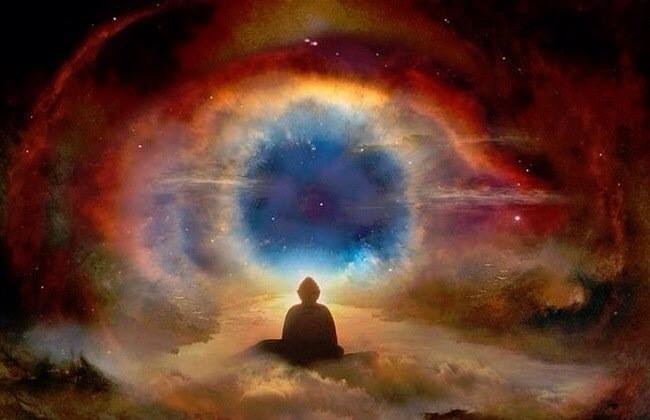
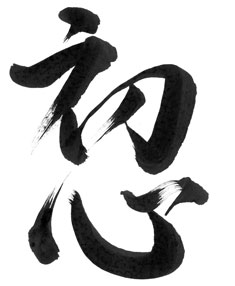
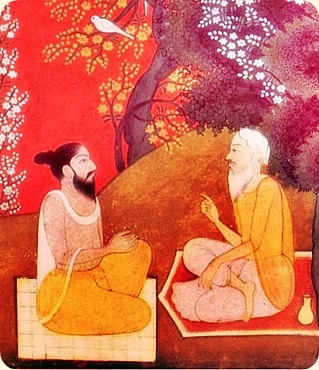
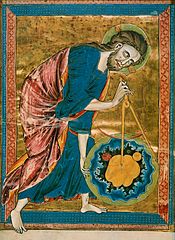

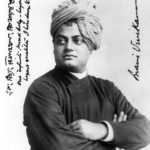
Leave a Reply
Want to join the discussion?Feel free to contribute!